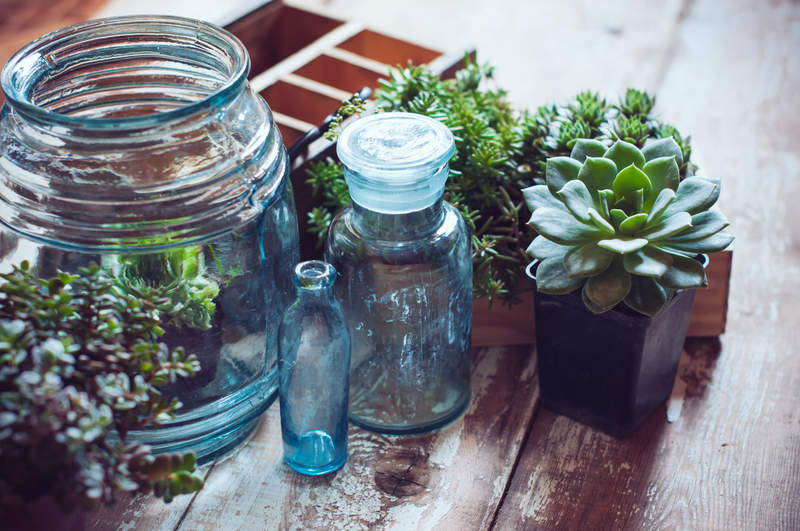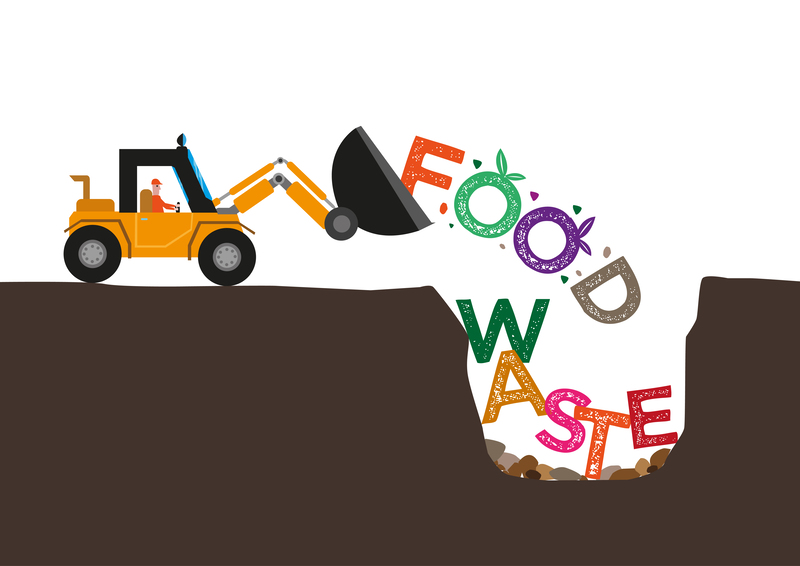Crafting a Zero-Waste Lifestyle at Home: The Ultimate Guide
Imagine living in a world where every item you use has a purpose, nothing gets thrown away, and your home produces no trash. This isn't a dream--it's the reality of a zero-waste lifestyle at home. As more people realize the environmental impact of modern living, reducing household waste becomes crucial. This comprehensive guide will walk you through crafting a zero-waste lifestyle at home, offering actionable steps, insightful tips, and creative ideas to help you live cleaner and greener.

What Does Zero-Waste Living at Home Mean?
Zero-waste living goes far beyond recycling. It's about redesigning your household habits to prevent waste from occurring in the first place. The goal is to send as little as possible to landfills or incinerators. Instead, materials and resources are reused, recycled, or composted. Zero-waste homes focus on sustainability, minimalism, and making mindful choices.
Benefits of Adopting a Zero-Waste Lifestyle at Home
- Environmental Impact: Reduces landfill waste, conserves resources, and lowers your home's carbon footprint.
- Financial Savings: Minimizes spending by eliminating single-use products and encouraging reuse.
- Healthier Living: Limits exposure to chemicals found in disposable products and food packaging.
- Personal Satisfaction: Living sustainably brings a sense of accomplishment and peace of mind.
The Five Rs of a Zero-Waste Lifestyle at Home
Building a zero-waste home starts with embracing the Five Rs:
- Refuse: Say no to what you do not need. This applies to junk mail, free promotional items, disposable cutlery, and more.
- Reduce: Minimize what you consume or bring into your home.
- Reuse: Opt for reusable items instead of single-use products.
- Recycle: Properly recycle what you can't refuse, reduce, or reuse.
- Rot: Compost organic matter to return it to the earth.
Getting Started with Zero-Waste at Home
Step 1: Evaluate Your Current Waste
Before you overhaul your lifestyle, start by monitoring your household trash for a week. What items make up the majority of your waste? Is it food packaging, plastic bags, or coffee pods? This insight will help you pinpoint where to focus your zero-waste efforts.
Step 2: Set Realistic Zero-Waste Goals
Zero-waste living doesn't happen overnight. Start small by selecting one area of your home--perhaps the kitchen or bathroom--and commit to reducing waste there first. Gradually expand your efforts room by room.
Zero-Waste Kitchen: The Heart of the Home
Zero-Waste Grocery Shopping
- Bring your own bags: Use reusable shopping bags, produce sacks, and glass jars or containers for bulk foods.
- Shop local and in bulk: Frequent farmers' markets for package-free produce. Choose stores with bulk bins for grains, nuts, snacks, and cleaning supplies.
- Avoid single-use packaging: Choose items with minimal or compostable packaging whenever possible.
Reduce Food Waste at Home
- Plan meals: Make shopping lists to avoid buying more than you'll use.
- Store food smartly: Use airtight containers for leftovers and perishable goods to extend shelf life.
- Compost food scraps: Start composting at home. Even apartment dwellers can try indoor composting or bokashi bins.
Rethinking Kitchen Supplies
- Ditch disposables: Replace paper towels with fabric cloths, and single-use plates with durable dishware.
- Reusable wraps: Choose beeswax wraps, silicone lids, or glass containers over plastic wrap.
- Sustainable utensils: Opt for wooden, stainless steel, or bamboo kitchen tools that last for years.
Zero-Waste Bathroom: Clean and Green
Greener Personal Care
- Bar soaps and shampoos: Use solid bars to eliminate plastic bottles.
- Bamboo toothbrush: Swap plastic brushes for compostable bamboo versions.
- Refillable containers: Purchase bulk toiletries or refill at zero-waste stores.
Eco-Friendly Alternatives for Common Products
- Reusable razors: Invest in a stainless steel safety razor with replaceable blades.
- Cloth instead of disposable: Try reusable cotton rounds for makeup removal and washable feminine hygiene products.
- Homemade cleaners: Make simple cleaner from vinegar, lemon, and baking soda in a reusable spray bottle.
Zero-Waste Cleaning Tips for the Whole Home
- Natural ingredients: Stock up on vinegar, baking soda, and Castile soap for almost all cleaning needs.
- Reusable cleaning rags: Upcycle old t-shirts into cleaning cloths instead of using paper towels.
- Bulk cleaning supplies: Choose refill stations or large containers to cut packaging waste.
Zero-Waste Laundry
- Eco-friendly detergent: Choose package-free detergent strips or powders, or make your own.
- Air drying: Line dry your clothes whenever possible to reduce energy and plastic microfibre shedding.
- Wool dryer balls: Replace single-use dryer sheets with these natural, reusable options.
Zero-Waste Lifestyle for Kids and Pets
For Kids:
- Reusable diapers and wipes: Cloth diapers are sustainable, economical, and come in fun designs.
- Eco-friendly toys: Choose wooden, metal, or recycled-material toys. Avoid plastic and battery-run options when possible.
- Secondhand clothing: Shop thrift stores or organize clothing swaps to save on resources.
For Pets:
- Bulk pet food: Choose bulk or local brands with sustainable packaging.
- DIY treats: Make simple pet treats at home with minimal packaging and healthier ingredients.
- Compostable waste bags: Look for biodegradable or certified compostable baggies for pet waste.
Tackling Paper and Digital Waste
- Cancel subscriptions: Opt for digital bills, magazines, and newsletters.
- Refuse junk mail: Register to remove your address from mailing lists and reduce unnecessary paper waste.
- Go paperless: Use cloud services and apps to store documents, take notes, and make lists.
Zero-Waste Closet: Sustainable Fashion Choices
- Buy less, choose well: Invest in high-quality clothing made from natural fibers. Avoid fast fashion.
- Care and repair: Mend clothes, replace buttons, or upcycle old garments into new pieces.
- Donate and swap: Give clothing new life by donating or swapping instead of discarding.
Simple Swaps for Everyday Zero-Waste Living
- Reusable water bottles and coffee cups: Carry your own wherever you go.
- Stainless steel or glass straws: Ditch plastic for good.
- Lunchboxes: Pack meals in durable, leak-proof containers for work or school.
- Cloth napkins: Elevate your meal with washable napkins at home and on the go.
Zero-Waste Gardening and Composting
- Home compost: Create rich, fertile soil using food scraps, paper, and yard trimmings.
- Grow your own food: Even a small balcony can yield herbs, tomatoes, or leafy greens.
- Mulch with yard waste: Reuse leaves and cuttings to nourish your garden beds.
Community Involvement & Sharing Economy
- Join a local zero-waste group: Exchange ideas and resources with neighbors committed to sustainability.
- Borrow, don't buy: Use libraries, tool-sharing networks, or neighborhood lending circles for books, equipment, and more.
- Support zero-waste businesses: Shop at stores that minimize packaging or offer bulk refill options.
Overcoming Challenges in Crafting a Zero-Waste Home
Transitioning to a low-waste or zero-waste lifestyle isn't always easy. Convenience culture, lack of local resources, and time constraints can all be barriers. Here's how to tackle them:
- Focus on progress, not perfection: It's okay to produce some waste while learning and adjusting.
- Prioritize impact: Start with the changes that will make the biggest difference and are easiest for you.
- Get everyone involved: Make zero-waste a family affair by delegating tasks and encouraging participation.
Zero-Waste Myths Debunked
- Myth: Zero-waste living is expensive.
Truth: While some zero-waste products may cost more upfront, overall you'll save by buying less and reusing more. - Myth: It's all or nothing.
Truth: Any reduction in waste is a victory! - Myth: Zero-waste is inconvenient.
Truth: New routines may take time, but most swappable changes are simple and rewarding.
Measuring Your Zero-Waste Success
- Track waste: Note how often you take out the trash or recycling. Fewer trips mean real progress.
- Set challenges: Try a "mason jar trash challenge" where you fit a week or month's trash into a single jar.
- Share and celebrate: Inspire others by sharing your zero-waste journey online or in your community.

Inspirational Zero-Waste Resources
- Books: "Zero Waste Home" by Bea Johnson, "The Zero Waste Chef" by Anne-Marie Bonneau
- Websites & Blogs: Zero Waste Collective, Going Zero Waste, Trash is for Tossers
- Apps: Bulk Finder, Too Good To Go (for surplus food), iRecycle
Key Takeaways for Crafting a Zero-Waste Lifestyle at Home
- Start small: Focus on one area at a time and build momentum.
- Embrace the Five Rs: Refuse, Reduce, Reuse, Recycle, and Rot.
- Make thoughtful swaps: Replace disposables with durable, reusable alternatives.
- Get the family onboard: Zero-waste works best with teamwork!
- Don't strive for perfection: Every step towards less waste counts.
Incorporating a zero-waste lifestyle at home is not only achievable but enjoyable, enriching your life and benefiting the planet. By making conscious choices each day, you can create a greener, cleaner, and more sustainable household. Ready to begin? Start today and inspire those around you--one zero-waste action at a time!